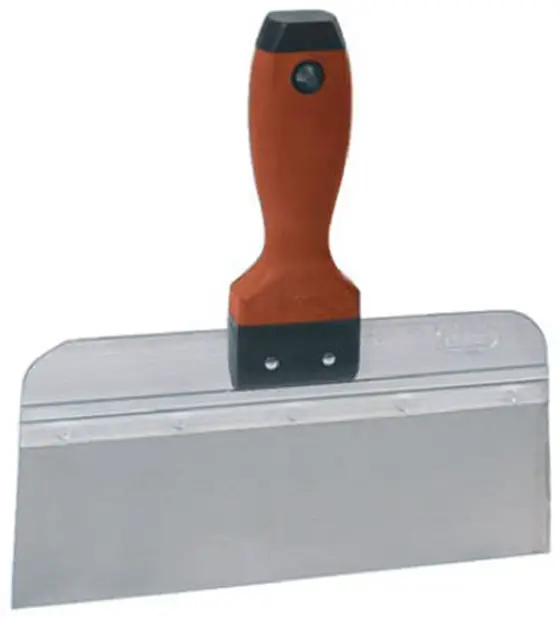Plaster vs. Drywall
DEAR TIM: Help! My husband wants to install drywall in our new room addition project. Drywall seems to dent easily and the finishing process involves tremendous quantities of dust. Is it still possible to use old fashioned plaster? Is it still manufactured, and if so, is it expensive? S. O.
DEAR S. O.: Do I ever have good news for you! Not only is plaster still available, it is, in my opinion, a tremendous value.
Your observation of drywall's tenderness is quite accurate. Drywall is, by and large, a fantastic product. However, the soft (relatively speaking) gypsum core of drywall is simply covered with a thick paper. It doesn't take much force to create a dent in drywall surfaces. Plaster surfaces, on the other hand, are much harder.
Plaster, in many respects, can be compared with concrete. Plaster, like concrete, begins as a mixture of dry compounds. When mixed with water, a chemical reaction begins to occur.
This chemical reaction causes the ingredients to begin a crystallization process. Within several hours,enough crystals have formed to cause the plaster to become solid. These crystals interlock with one another and form a dense, hard surface.
Plastering systems have come a long way in the past 70 years. Many years ago, plaster was applied over thin wood strips called lath boards. The plaster sometimes had horse hair added to make it stronger. Modern advancements have led to veneer plaster systems.
CLICK HERE to get FREE & FAST BIDS from local Contractors who can install your new plaster wall.
These systems incorporate many of the advantages of drywall to make them cost effective. Horse hair is no longer needed for strength. Modern plaster compounds are exceedingly strong.
Learn the secrets to great drywall and plaster techniques in this Drywall / Plaster Installation Checklist. I offer a 100% Money Back Guarantee.
Plaster veneer systems are applied over special gypsum core boards very similar to regular drywall. However, there is a very important distinction between the two. If you intend to plaster, you must use a gypsum board often referred to as blue board.
This board is manufactured using a special paper which has a distinctive blue color. The blue paper can readily accept the large quantity of water from the plaster without causing damage to the inner gypsum core. This paper also helps to insure a good bond between the plaster and the gypsum board.
Veneer plaster work has two other advantages. Once the blue board is fastened to the walls and ceilings, dust can be kept to a minimum. The wet plaster is applied to the blue board and dries to a smooth, hard finish. The plaster requires no sanding after it drys. A professional plasterer can achieve a finish which is as smooth as glass.
The other advantage is speed. Some veneer plasters are one step operations. The plasterer trowels it on and finishes it in one step. Small jobs can be totally completed in one day. Your job, however, would only take two days. The blue board would be hung the first day and the plasterer would finish it on the second day. A similar drywall job would last five to six days.
Plaster is affordable. Often, a one coat veneer systems only costs 25 percent more than a similar drywall job. A drywall job for an average house in the Midwest costs approximately $4,800. An upgrade to plaster may only add $1,200 to the overall cost of the job.
While that may seem like a substantial amount, consider the fact that you only get one chance to do this. If you decide, after your home or room addition is built, to switch from drywall to plaster, you will have to remove the drywall and start over. Give serious consideration to using plaster on your next project. I'm confident that you will be satisfied.
CLICK HERE to get FREE & FAST BIDS from local Contractors who can install your new plaster wall.
Column 038
